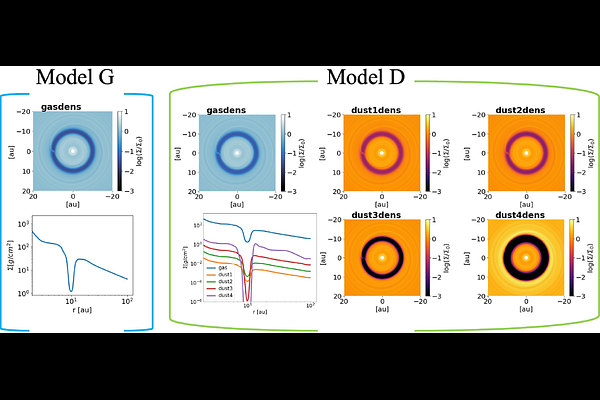Planet-induced Gas and Dust Substructure Feedbacks on Disk Thermal Structure

Planet-induced Gas and Dust Substructure Feedbacks on Disk Thermal Structure
Kan Chen, Paola Pinill, Mihkel Kama
AbstractProtoplanets can interact with their natal disks and generate gas and dust substructures such as gaps and rings. However, how these planet-induced substructures affect the disk temperature, and how that in turn influences the substructures, remains unclear. We aim to study disk substructures and the thermal structure self-consistently and explore their impact on volatile distribution. To this end, we perform iterative multi-fluid hydrodynamical and radiative transfer simulations of planet-disk interactions. We find that the temperature in a structured disk deviates significantly from that of a smooth disk due to giant planet formation. In particular, midplane temperatures in gaps can increase by tens of Kelvin, leading to volatile sublimation as well as radial shifts and multiplication of icelines. Comparing our multi-dust models with previous gas-only models, we find that the former produces slightly shallower gaps and temperatures about 10 K ($\sim25\%$) higher. Furthermore, the temperature at dust rings formed by pressure bumps can drop by several Kelvin, creating volatile freeze-out regions. Nevertheless, the overall midplane ice distribution is not strongly sensitive to whether dust is included. We also investigate the effect of varying disk viscosity. Increasing $\alpha$ viscosity from $10^{-4}$ to $10^{-2}$ leads to a roughly 10 K ($\sim25\%$) warmer midplane due to enhanced vertical dust mixing. However, higher viscosity suppresses gap opening and reduces the temperature enhancement within gaps. As a result, iceline locations do not follow a simple trend with viscosity. Finally, we propose an observational strategy using ALMA to test our predicted temperature changes within disk gaps.